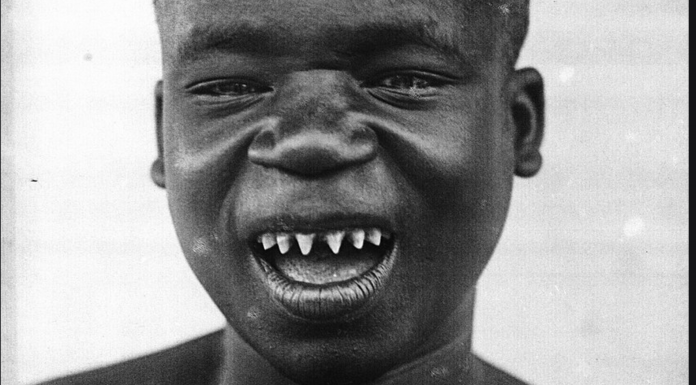
Zoo officials apologize for display of African man in 1906
NEW YORK (AP) — The organization that runs New York’s Bronx Zoo is apologizing for racism in the zoo’s past, including putting Ota Benga, a central African man, on display in the Monkey House in 1906.
“In the name of equality, transparency, and accountability, we must confront our organization’s historic role in promoting racial injustice as we advance our mission to save wildlife and wild places,” officials with the Wildlife Conservation Society said in a statement Wednesday.
The officials with the society cited two instances of “unconscionable racial intolerance,” including the treatment of Benga, a young man from the Mbuti people of what is now the Democratic Republic of Congo, who was put on display for several days in September 1906.
They noted that outrage from Black ministers “brought the disgraceful incident to an end.”
Benga went from the zoo to an orphanage in Brooklyn and then to Lynchburg, Virginia, where he worked in a tobacco factory. He died by suicide in 1916.
The conservation society officials also condemned the “eugenics-based, pseudoscientific racism” promoted by two of its founders, Madison Grant and Henry Fairfield Osborn Sr.
Eugenics, a movement promoting selective human breeding to weed out characteristics seen as undesirable, had many adherents in the early decades of the 20th century and was influential in shaping Nazi policies.
RECENTLY: Feminist, Abortionist, Racist – Margaret Sanger CANCELED
Excerpts from Grant’s book “The Passing of the Great Race” were included in a defense exhibit for one of the defendants in the Nuremberg trials, the zoo officials said.
“We deeply regret that many people and generations have been hurt by these actions or by our failure previously to publicly condemn and denounce them,” the officials said in the statement, which was first reported in The New York Times.
The chief executive of the conservation society, Cristián Samper, told the Times that the group had started digging into its history because of its 125th anniversary this year.
Samper said that process, combined with conversations about racial injustice sweeping the country after the police killing of George Floyd, prompted the apology.
RECENTLY:
US Officials Insist African Migrants Do Not Have Ebola
NY Zookeeper Infects Tiger With COVID-19
Another Animal Attack On A Zoo Visitor Who Got Too Close

Colonialism’s Cages: When Indigenous People Were Placed In Human Zoos
April 30, 2019
These haunting images taken inside human zoos reveal the dark secret of Europe and America’s not-so-distant colonial past.
All That’s Interesting – In the thick of late 19th and early 20th century colonialism, across Europe and the United States, people — along with animals — could be found in zoos. There, white families could gawk at individuals who had been dragged from foreign countries and placed inside cages, where they acted out a performance of their “daily life” for the onlookers’ entertainment.
Indigenous peoples of Africa, Asia, the Americas — and almost anywhere else that non-white people could be found — served as the exhibits’ subjects.
After being taken from their homes and hauled across the ocean, these individuals would be placed (sometimes behind fences or wires) in enclosures designed as artificial replicas of their “natural habitats,” including a fake ecosystem and prop versions of their former homes. Visitors could then peer into their cages to see how the “other half” lived.
How the subjects of these human zoos lived was, of course, an orchestrated performance, one full of dubious rituals and ceremonial dances designed to make the subjects’ cultures seem as exotic and strange as possible. Some subjects, for example, would declare a new chief every day, or stage a wedding or a religious dance for the delight of their audience.
When the show ended, the subjects could be taken out of the zoo and carted around the world to another one. Perhaps they would move on to another “Negro Village” at the World’s Fair, for one. Some would become permanent displays in public zoos or oddities at freak shows.
It was the oddity that really captivated people so much – the strangeness of another culture, plucked out of its natural environment and put on display.
Often, the people displayed would be chosen for the uniqueness of their bodies. Many were displayed in the nude and treated as scientific subjects, studied to develop guides of the physical characteristics that, the researchers claimed, defined primitivism and savagery. Read more.



